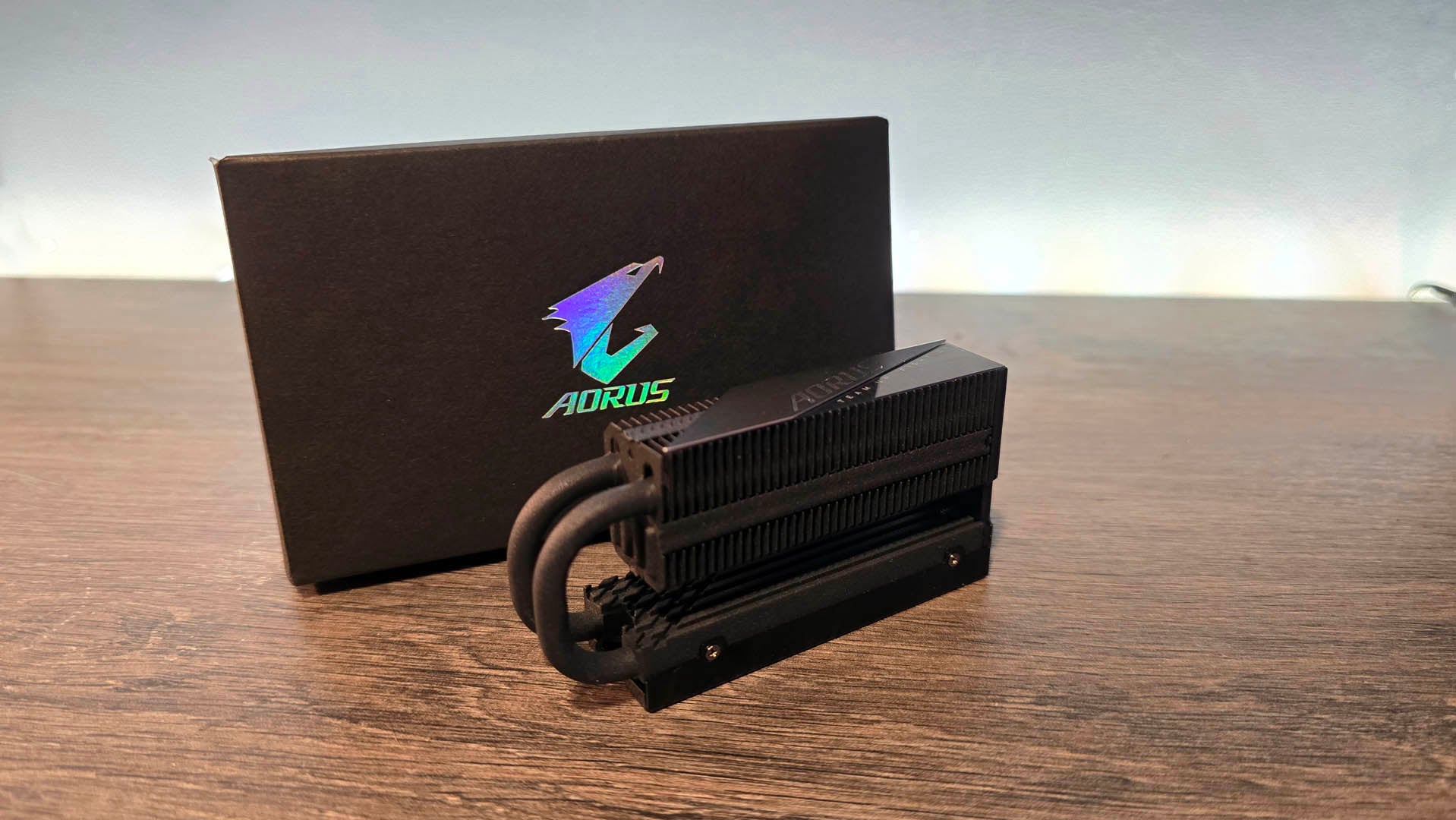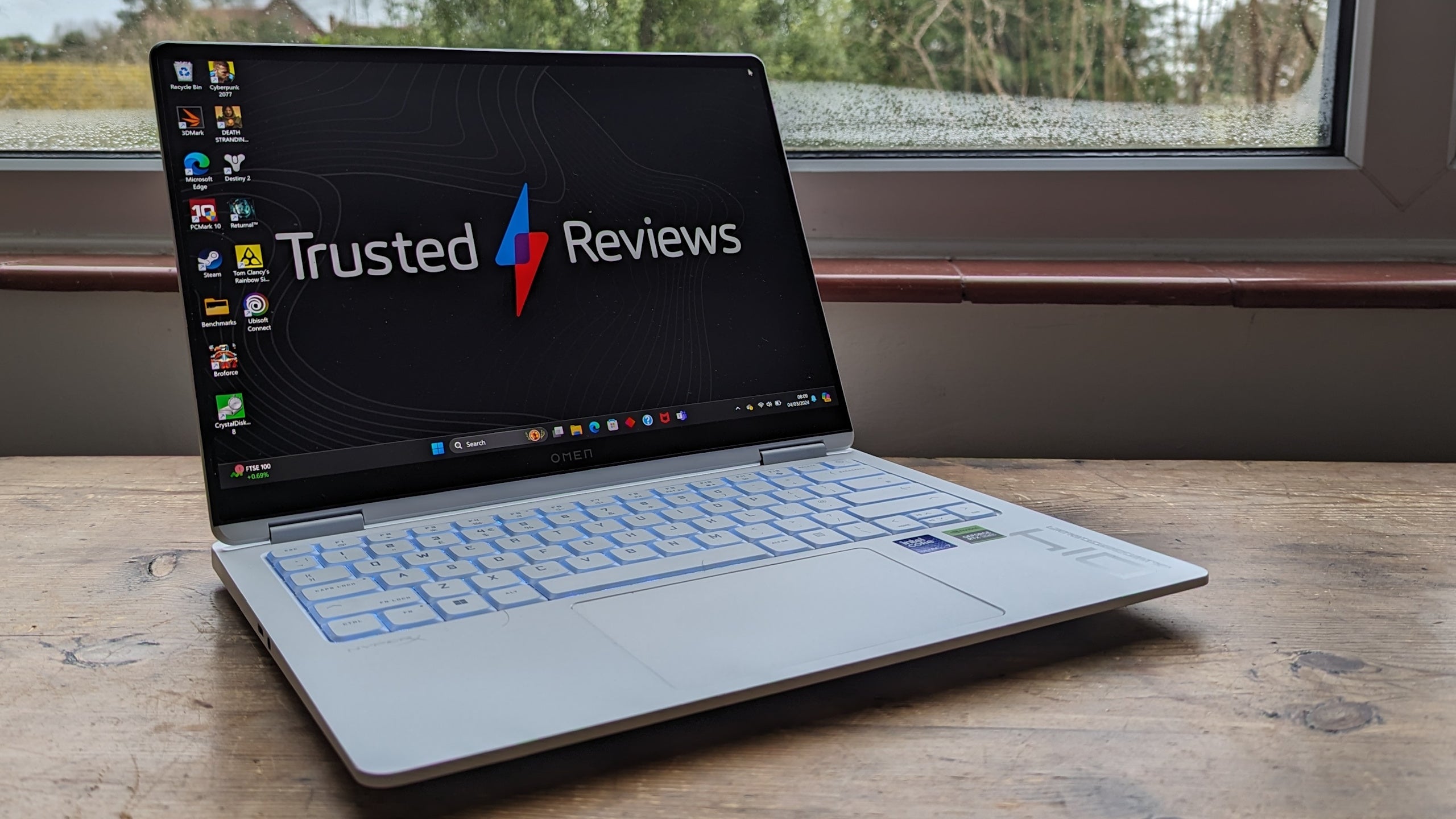Nvidia GeForce RTX 4060 Ti Review
The latest mid-range Nvidia graphics card



Verdict
The Nvidia GeForce RTX 4060 Ti is a mid-range graphics card with a reasonable asking price. It is best suited for Full HD and Quad HD gaming and comes with support for the latest DLSS 3 technology. But due to its minimal performance upgrade, it might not be the best choice for anyone who is currently using an RTX 3000 GPU.
Pros
- Support for DLSS 3
- Solid Quad HD performance
- One of the most affordable RTX 4000 cards
- Improved power consumption
Cons
- Minimal improvement from the RTX 3060 Ti
- Slower than an RTX 3070 Ti
- High price considering performance
- 8GB vRAM feels too low
Key Features
- Quad HD performanceThe RTX 4060 Ti was able to achieve at least 70fps in a majority of games when running in Quad HD.
- Enhanced ray tracingCompatible games can use ray tracing to produce more accurate and realistic lighting and shadow effects.
- Support for DLSS 3In supported games, DLSS 3 can offer impressive frame rate boosts, especially helpful if ray tracing is activiated.
Introduction
The Nvidia GeForce RTX 4060 Ti is the latest addition to the RTX 4000 Series and looks to be the most consumer-friendly graphics card of the range yet.
The RTX 4060 Ti has a starting price of $399/£389, making it a lot more affordable than the $599/£589 RTX 4070 Ti or $1599/£1679 RTX 4090. Despite the lower price, it features the latest Ada Lovelace architecture and so boasts 3rd generation ray tracing cores and support for DLSS 3.
It’s also boasts fast enough performance to run AAA games at a Quad HD (2560×1440) resolution with a high frame rate. But after testing it against its predecessor, the RTX 3060 Ti, the performance differences aren’t big enough to make an upgrade from the RTX 3000 generation a no-brainer purchase. Instead, this card would only be a good investment if you’re currently using an RTX 20 or GTX 10 generation GPU.
Specs and design
- Features new Lovelace architecture
- Reduced power consumption from the RTX 3060 Ti
- Reduced CUDA Core count
The Nvidia GeForce RTX 4060 Ti is the latest graphics card that runs on the latest Lovelace architecture from Nvidia, allowing it to offer up an improved raw performance due to the 4N process node. The last-generation Ampere chips were built on an 8nm node, and this reduction has meant that Nvidia can cram even more transistors onto the latest chip to boost performance.
Lovelace brought along support for the 4th-Gen Tensor Cores, which has ensured compatibility with the latest DLSS 3 solution. DLSS 3 improved on its predecessor by using artificial intelligence to add in extra frames to supported games in order to boost performance.
Meanwhile, the new 3rd Generation Ray Tracing cores help to further improve ray tracing efficiency, enabling more realistic in-game lighting and shadow effects. These features have been mainstays since the RTX 2000 Series launched and have only improved over time.
Interestingly, Nvidia didn’t decide to up the CUDA Core count with the RTX 4060 Ti. However, the boosted clock speeds did improve thanks to the advancements made to the GPU’s architecture. It’s a shame that Nvidia hasn’t tried to push the hardware further for a greater performance boost, but this does at least mean it’s been able to decrease the overall power consumption of this card compared to its predecessor, which is ideal for your electricity bills.
Unlike most other Nvidia graphics cards, the RTX 4060 Ti comes with two video memory configurations, 8GB and 16GB. My model came with 8GB video memory, with the 16GB variation being released in July of this year. Curiously, the company used an older version of the video memory format, GGDR6, instead of the more advanced GDDR6X.
| Nvidia RTX 4060 Ti | Nvidia RTX 3060 Ti | Nvidia RTX 4070 Ti | Nvidia RTX 3070 | |
| Architecture | Ada Lovelace | Ampere | Ada Lovelace | Ampere |
| CUDA Cores | 4352 | 4864 | 7680 | 5888 |
| Boost clock speed | 2.54 GHz | 1.67 GHz | 2.61 GHz | 1.73 GHz |
| Video memory | 8/16GB GDDR6 | 8GB GDDR6/GDDR6X | 12GB GDDR6X | 8GB GDDR6 |
| Ray Tracing Cores | 3rd Generation | 2nd Generation | 3rd Generation | 2nd Generation |
| Tensor Cores | 4th Generation | 3rd Generation | 4th Generation | 3rd Generation |
| Graphics card power | 550W | 600W | 700W | 650W |
In terms of design, the RTX 4060 Ti looks incredibly similar to the RTX 3060 Ti. It has the same striking ‘X’ design on the front, alongside a dual-fan setup with one located on the front and one on the rear.
The size of the 4060 Ti is very reasonable, and a lot more accessible than the behemoth RTX 4090. The dimensions sit at 244mm in length and 98mm in width. It’s actually smaller than its predecessor and should fit into your PC case without issue.
It shares the same ports as the RTX 3060 Ti, coming with a single HDMI 2.1 connection and three DisplayPort 3.1 inputs. This will allow users to connect to external monitors with support up to 4K 120Hz and 8K at 60Hz.
The graphics card comes with a 12-pin power connection rather than the standard 8-pin format. Thankfully, if this does not play nice with your existing PSU cables, Nvidia bundled a 12-pin adapter in the box so you won’t need to worry about purchasing extra hardware – just make sure you don’t misplace the adapter.
Features
- DLSS 3 provides a great performance boost over DLSS 2
- Ray tracing capabilities are vastly improved
DLSS 3 is one of the standout features of the RTX 4000 Series, offering a significant performance boost compared to the preceding DLSS 2 iteration found on RTX 3000 cards.
It’s important to understand what DLSS actually is. Initially, the software was able to use artificial intelligence to create additional pixels for your game to reduce the workload of the GPU. This helped to provide a significant frame rate boost.
DLSS 3 was introduced with the RTX 4000 Series. Now, instead of just generating pixels, the AI can generate entire frames. This caused a massive uptick in graphics performance within compatible games.
To help find out how this card handles games with DLSS 3 turned on, we ran some tests in Cyberpunk 2077 and F1 22 with ray tracing activated. It’s worth noting that the RTX 3060 Ti is using DLSS 2, while the RTX 4060 Ti is using the improved DLSS 3. You can see the results we found below, all of which had ray tracing activated, were set to a 1440p resolution and used balanced settings for DLSS/FSR.
The RTX 4060 Ti was able to beat out its predecessor, the RTX 3060 Ti, in every test with DLSS 3 and ray tracing turned on,
For Cyberpunk 2077 in Quad HD, activating DLSS 3 on the RTX 4060 Ti resulted in an incredible 300% performance boost, taking the average frame rate from 22fps to 83fps. In the same test, DLSS 2 on the RTX 3060 Ti saw a 155% improvement, boosting the 20fps average to 51fps. That means DLSS 3 was 2x more efficient than DLSS 2 in this test.
While the above results are for a 1440p resolution, my findings also showed that DLSS 3 made Cyberpunk 2077 playable in 4K with ray tracing activated. Without DLSS, it could only run at an average of 3fps, but with DLSS 3 turned on, that performance sprung up to 36fps.
F1 22 also saw some improvements thanks to DLSS 3, but they were not as noticeable as with Cyberpunk 2077. In Quad HD, DLSS 3 provided an 81% performance increase, while DLSS 2 (via the RTX 3060 Ti) saw an even better 83% uptick. This shows that certain games will respond better to DLSS 3 than others, but overall, the RTX 4060 Ti was still able to provide a consistently higher frame rate than the RTX 3060 Ti.
One thing that is important to note is that not every game has support for DLSS 3. Currently, Nvidia claims that over 35 games have support for this feature, including Hitman 3, Microsoft Flight Simulator and The Witcher 3: Wild Hunt. More games will be added to this list over time, but older titles aren’t guaranteed to get support.

Ray tracing was another feature to be improved upon within the RTX 4000 Series. Ray tracing is a light rendering technique that better simulates lighting and shadows, making gameplay look more realistic and immersive. The RTX 4060 Ti comes with new RT Cores that boost the efficiency of the technology to reduce performance loss upon activation.
The latest ray tracing technology is also only supported on a select list of games, but support is growing larger every month, with the launch of the PS5 and Xbox Series X undoubtedly increasing interest in the technology.
Performance and benchmarks
- Can handle modern games with ray tracing activated
- Most proficient in Quad HD performance
- Impressive 3D content creation scores
Nvidia has improved the raw performance of the RTX 4060 Ti compared to its predecessor, although the upgrades here are not astronomical. I put this to the test and compared the RTX 4060 Ti to some other popular graphics cards on the market, including the RTX 4000 and RTX 3000 Series.
In order to make this review as fair as possible, we used the same PC configuration throughout all of our tests. You can see the breakdown of the test rig we used below:
- Motherboard: Gigabyte Technology X670E AORUS Master
- CPU: AMD Ryzen 5 5600X
- SSD: PNY CS3140 1TB
- PSU: Corsair HX 850
- Cooler: Corsair Hydro Series H150i PRO RGB 360mm liquid cooler
- OS: Windows 11
With all that explained, here is how we got on with our testing.
I benchmarked all of our graphics cards with industry-standard tests, including 3DMark Time Spy Extreme and Blender.
The 3D Mark test is a synthetic benchmark that can evaluate overall gaming performance, making it a good indicator of raw power. The RTX 4060 Ti beat out the RTX 3060 Ti, but it was not capable of consistently outperforming the older RTX 3070 Ti card.
The Blender benchmark tests a GPU’s 3D rendering performance. This is more important for content creators and will give a good measure of how the card will handle workloads like video editing or 3D animations. The RTX 4060 Ti was consistently more powerful than its predecessor but notably, it only scored higher than the RTX 3070 Ti in just one Blender test (Monster), which is a humbling graphical performance for a next-generation card.
To see how this GPU handles gaming, I ran a multitude of tests in a variety of games. These scores give a better indication of how many frames per second this GPU can produce, on average, for specific titles, and I included a wide variety to see how it handles different types of games.
The RTX 4060 Ti excelled in Full and Quad HD (1080p and 1440p) resolutions, falling short in 4K gaming compared to its competition.
It was able to regularly beat out the RTX 3060 Ti, but the differences were never too large. In Rainbow Six Extraction, the RTX 4060 Ti outperformed its predecessor by 21fps in Full HD, and by 11fps in Quad HD. For more demanding games, the RTX 4060 Ti could only offer a boost of around 10fps to 15fps compared to the RTX 3060 Ti.
While these results are positive, it shows that the RTX 4060 Ti is not a complete juggernaut of power, even against the last generation of cards.
This is still a good graphics card though. In every game, the RTX 4060 Ti was able to hit above 60fps in Quad HD, even for notoriously demanding games such as CyberPunk 2077 and Returnal. As for eSports games and slightly older titles, the GPU was able to hit lofty heights at a 4K resolution: 70fps in Rainbow Six Extraction and 105fps in F1 22.
It’s worth noting that there are some discrepancies in certain titles, with the RTX 4060 Ti only reaching 173fps in Dirt Rally in Full HD, while the RTX 3060 Ti managed to hit 187fps. This is likely to be a graphics driver issue which should eventually be resolved, but it does prove you’re not guaranteed to get a better performance than the RTX 3060 Ti for every single game.
Overall, the Nvidia GeForce RTX 4060 Ti performs as well as I would expect for a mid-range graphics card. However, due to the minimal differences in performance when compared to the RTX 3060 Ti and RTX 3070 Ti cards, I would not recommend upgrading this card if you already own an RTX 3000 Series GPU. Those who are still using RTX 20 Series and GTX 10 will see more benefits from this upgrade, especially with the inclusion of DLSS 3.
Power consumption
- Requires at least a 550W PSU
- Improved peak temperature
The Nvidia GeForce RTX 4060 Ti may not provide the biggest performance jump when compared to its predecessor, but Nvidia has been able to decrease the overall power consumption instead.
Nvidia recommends using at least a 550W PSU for the RTX 4060 Ti, while the RTX 3060 Ti requires an even larger capacity of 600W PSU. Our own findings back this up too, as the peak power consumption we saw, with a PC including both the RTX 4060 Ti and AMD Ryzen 5 5600X processor, came in at just 318W.
| Nvidia RTX 4060 Ti | RTX 4070 Ti | RTX 3070 Ti | RTX 3060 Ti | RX 7900 XT | |
| Peak Power Draw | 318W | 436W | 452W | 367W | 485W |
During testing, the RTX 4060 Ti consumed less power than all the other cards we tried, including the last-gen RTX 3060 Ti and RTX 3070 Ti. This is very impressive power efficiency and is arguably the graphics card’s greatest strength.
This is an ideal GPU for anyone who doesn’t fancy racking up a costly electricity bill or wants to stick to a cheap (or old) PSU.
Latest deals
Should you buy it?
You want a solid Quad HD performance:
The Nvidia RTX 4060 Ti managed to hit over 60fps in every game we tested with a Quad HD resolution. The addition of DLSS 3 also means that you can enjoy games with ray tracing activated with a consistent frame rate.
You already own the RTX 3060 Ti:
If you already own the Nvidia RTX 3060 Ti, this card is probably not for you. The differences are too minimal to make the upgrade worth it, even with the inclusion of DLSS 3.
Final Thoughts
The Nvidia GeForce RTX 4060 Ti is a mid-range graphics card that performed well, but it did not blow me away. The inclusion of DLSS 3 makes 4K gaming possible for supported games, while ray tracing efficiency has been improved for anyone who wants to make use of the advanced lighting technology.
The main downfall of the RTX 4060 Ti is that it does not offer a big enough raw performance upgrade when compared to its predecessor, the RTX 3060 Ti. As a result, it’s hard to justify the $399/£389 price if you already own a card from the preceding generation.
I would recommend the RTX 4060 Ti to anyone who owns a particularly old GPU and is still looking to game in either Full HD or Quad HD resolutions. The reasonable PSU requirements and low power consumption does make it more consumer-friendly than some other GPUs on the market. That said, you’ll find better value with the Nvidia RTX 3070 and RTX 3070 Ti cards, despite being a couple of years older. Otherwise, check out our best graphics card roundup for even more options.
How we test
Every graphics card we review is run through a series of synthetic and real-world benchmarks to gauge its performance, power efficiency and potential for overclocking.
Tested with in-game benchmarks
Power consumption checked
Compared against other cards we’ve tested
FAQs
Yes, the RTX 4000 Series has support for DLSS 3 which is the current-generation iteration of Nvidia’s DLSS technology.
Yes, it comes in 8GB and 16GB. At the time of writing, only the 8GB version is available, but the 16GB version will be coming out in July 2023.








